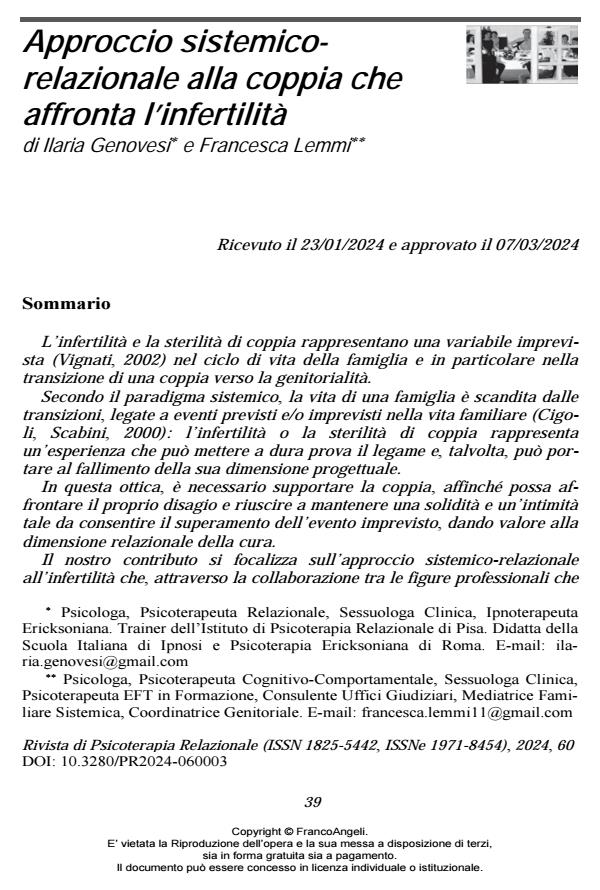Systemic-relational approach to couples experiencing infertility
Journal title RIVISTA DI PSICOTERAPIA RELAZIONALE
Author/s Ilaria Genovesi, Francesca Lemmi
Publishing Year 2025 Issue 2024/60
Language Italian Pages 20 P. 39-58 File size 269 KB
DOI 10.3280/PR2024-060003
DOI is like a bar code for intellectual property: to have more infomation
click here
Below, you can see the article first page
If you want to buy this article in PDF format, you can do it, following the instructions to buy download credits

FrancoAngeli is member of Publishers International Linking Association, Inc (PILA), a not-for-profit association which run the CrossRef service enabling links to and from online scholarly content.
Infertility and couple sterility represent an unexpected variable (Vignati, 2002) in the family life cycle and in particular, in the transition of a couple towards parenthood. According to the systemic paradigm, the life of a family is marked by transitions, linked to foreseen and/or unexpected events in family life (Cigoli, Scabini, 2000): infertility or sterility of a couple represents an experience that can impact on the bond and can sometimes lead to the failure of its planning dimension. From this perspective, it is necessary to support the couple, so that they can face their discomfort and be able to maintain a solidity and intimacy that allows them to overcome this unexpected event, giving value to the relational dimension of care. Our contribution focuses on the systemic relational approach to infertility which, through collaboration between professional figures operating in the field of human reproduction, proposes a clinical intervention with the couple, supporting them emotionally in all phases of the process, from evaluation and elaboration of the diagnosis to the outcome of the treatment.
Keywords: infertility, couple, relational systemic approach, emotions, resonances.
Ilaria Genovesi, Francesca Lemmi, Approccio sistemicorelazionale alla coppia che affronta l’infertilità in "RIVISTA DI PSICOTERAPIA RELAZIONALE " 60/2024, pp 39-58, DOI: 10.3280/PR2024-060003